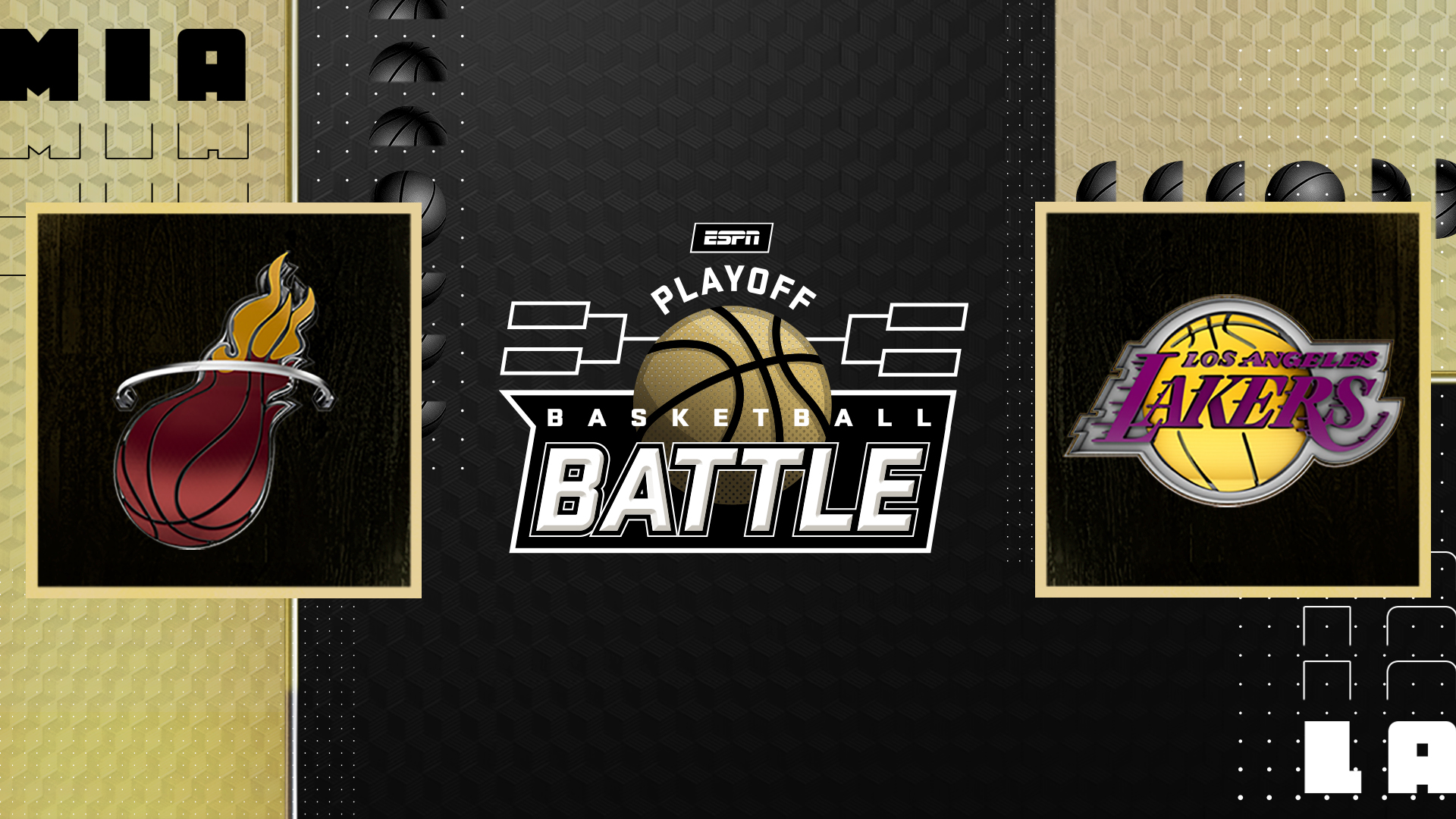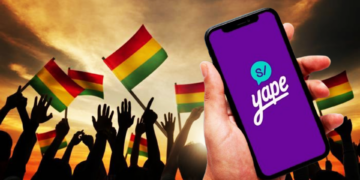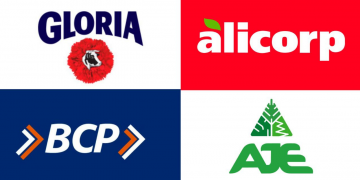Crédito: fuente
SECAUCUS, N.J. — The lottery has become a party for the damned. It is usually held in a fancy hotel, with pre-show mingling over cocktails and appetizers for VIPs. Once a team contingent showed up, let’s say, a little rowdier than usual after a private flight to New York. Representatives from each lottery team sit at tables adorned with team logos in the secret drawing room where the actual lottery happens about an hour before the TV show. A dozen media «observers» watch. It is a production.
The drawing room of the pandemic lottery was a curtained-off rectangle in the atrium of the NBA’s nondescript office building — it could pass as Initech’s headquarters — in Secaucus, New Jersey. There were nine people in the room — including me. There were more pingpong balls (14) than people. Other than the requisite accountant from Ernst & Young, there were no other visitors — just 40 NBA staff. The TV show, headlined by Mark Tatum, the NBA’s deputy commissioner, was filmed in the cafeteria down the hall.
I was the only media member in the drawing room. If this turns out to be one the NBA finally rigged, I will go down in infamy as having failed to detect the conspiracy.
• The NBA kicked around constructing some video wall in which representatives from each team could view (via Zoom) the drawing, but decided it was both unnecessary and cumbersome. A few team executives agitated for an in-person spot in the room, sources told ESPN. No dice.
• Each attendee stopped at a security desk at the front entrance to hand over various waivers and medical declarations. Then we proceeded into a testing room for the coronavirus nasal swab. My results came back — negative — in 23 minutes. This was apparently an antigen test — slightly less accurate than the more common PCR molecular test, prone to a few false negative results, but obviously much faster. We all wore masks for the remainder of our time in the drawing room.
• The lucky nine handed over our phones and sequestered in the drawing room at about 7:30. The drawing takes about five minutes. An NBA employee vacuums up four numbered pingpong balls, one-by-one at precise 10-second intervals, from an old-school lottery machine. (Yes, there is a timekeeper who stands with his back to the machine and holds a stopwatch.)
2 Related
There are 1,001 possible four-digit combinations. Each lottery team is assigned a certain number of them. The three worst teams get the most: 140 apiece for Golden State, Cleveland, and Minnesota.
And let me tell you: Once a grown man in a suit holds up a pingpong ball and recites aloud the number you can already see on that pingpong ball, the lottery feels like its old goofy self again — even amid a pandemic.
• After the drawing, we made small talk in the atrium as we waited for the ESPN broadcast. Suddenly, Tatum burst through double doors and into the atrium on his way to the cafeteria set. This would never happen in a regular lottery: Tatum did not know the results, and now he was chatting with a half-dozen of us who did. For about five minutes, we were at risk of spoiling it for him! As the conversation flowed, I came very close to making a generic «Woe are the Knicks» joke before realizing even that would tip him to the Knicks falling (again).
• Speaking of the Knicks: Tatum recalled Patrick Ewing, New York’s rep on the dais last season, standing right behind him — at an angle from which he could spot the contents of the No. 3 envelope before Tatum. As Tatum ripped open the envelope, he heard Ewing groan — knowing the Knicks had barely missed out on Ja Morant and Zion Williamson. Tatum can still hear that groan in his head.
• Two days before the lottery, I asked Gersson Rosas, Minnesota’s president of basketball operations, if he had any lottery superstitions. He did not. «We’re due for something good to happen to us,» Rosas said, «after everything we’ve been through.» The lottery gods (a subset of the basketball gods) agreed.
What a moment for Minnesota. As rosters stand now (subject to the usual offseason makeovers), the Wolves would probably be projected as one of the two or three worst teams in the loaded Western Conference. They owe their 2021 first-rounder, with teensy top-3 protection, to Golden State. Their team is (basically) for sale. There is no consensus No. 1 pick. If the Wolves feel pressure to chase a playoff spot, would they be open to sniffing around what they might get packaging that pick and trading down?
MORE: Who should — and will — the Timberwolves draft at No. 1?
• Also, Timberwolves: I have acquired the envelope and Wolves team placard from Thursday’s show. An NBA staffer gave them to me! Here’s proof:
(It might be one of several copies. I’m choosing to believe it’s the one Tatum held up.)
If you want it, I’m sure we can agree on some sort of transaction! I actually think you should not claim it, though. It gets depressing when teams collect too many souvenirs from lottery wins.
• Devonte’ Graham, the Hornets’ representative on the virtual dais, had not thought about his outfit, his TV backdrop, or the possibility of bringing any lucky trinket by 5 p.m. — three-ish hours before the show. «I’m trying to let it come to me,» he told ESPN. «I don’t want to plan too hard and have it backfire.» The lottery gods admired his restraint.
• Graham is still smarting about being left off the list of finalists for the NBA’s Most Improved Player award. «I was definitely upset,» he said. «And surprised.»
• We know the Warriors, with reasonable aspirations of contending for the title next season, will sniff around what they might get packaging the No. 2 pick for a quality veteran or two (plus other stuff).
The NBA has not seen a dilemma like this in a long time. Maybe you don’t think it’s a dilemma — that the Warriors need to do everything in their power to keep their title window open. That’s probably so. A title window is precious. If Draymond Green’s decline this season was real — and not the product of malaise — Golden State cannot act as if the Stephen Curry/Klay Thompson/Green trio alone puts them ahead of the Los Angeles teams (or perhaps even on par with them). Thompson has not appeared in a game in 14 months.
But if Green revs back up, that trio — plus a few intriguing young players, including the No. 2 pick — is pretty damned good. As a rule, rookies do not help you win, but No. 2 picks can be exceptions.
Nailing that pick could give Golden State a bridge beyond the Curry/Thompson/Green era. They have talked about wanting to be the Spurs — about being a top team for a quarter century. Drafting a star at No. 2 would unlock that path. As Kevin Pelton noted Thursday, they might also have a hard time finding a veteran who is both available for what Golden State can offer and worth what they can offer — and really moves the needle on their title odds for next season.
Of course, the Warriors could trade this pick and still draft a bridge star with Minnesota’s 2021 pick — or with a stroke-of-genius trade down the line, as the Spurs did in swapping George Hill for Kawhi Leonard.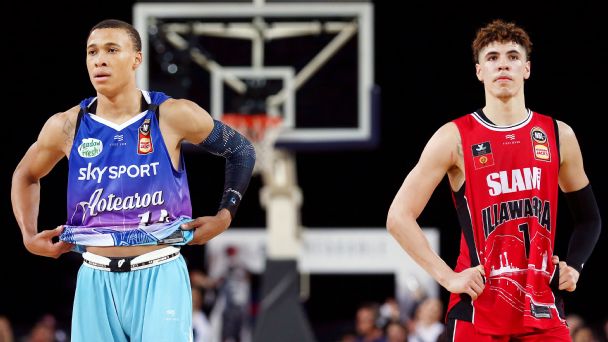
Get ready for LaMelo Ball, Anthony Edwards and the next crop of NBA talent.
• Latest mock draft
• Top 100 draft rankings
• Full draft order
• Scouting likely lottery picks
But what if Minnesota’s pick somehow ends up toward the bottom of next year’s lottery — or worse? The draft is unpredictable. That doesn’t mean it’s completely random. Your chances of finding a franchise star are still higher at the top. That might be less true this season, but it’s still generally true.
If the Warriors think they can get the guy they want elsewhere in the lottery, they could thread the needle in some sort of Jayson Tatum/Markelle Fultz-style deal in which they trade down and pick up some fringe veteran help. But some other team has to love someone else enough to pay to move up.
• Golden State brass initially asked Joe Lacob, the team’s governor, if he wanted to helm the virtual dais for the team’s first lottery appearance since their legendary 2012 tank job for Harrison Barnes.
They consider Lacob unusually lucky, for various reasons. He told them, semi-facetiously, something to the effect of: «I don’t do lotteries. I do championships.» When ESPN’s Ramona Shelburne asked Lacob about that cheeky line, he chuckled. «This is gonna be like the ‘light years’ thing,» Lacob said. «I did say that. But when you’re in last place, you shouldn’t really have much to say.»
Stephen Curry was the next and obvious choice. He had one request, Golden State higher-ups said: Ask Klay first. Thompson apparently passed.
• Yes, the name of Golden State’s lucky dog — Joe Lacob’s dog — that Curry referenced on the broadcast with Rachel Nichols is Larry O’Brien Lacob. Larry was one of more than 100 pets the Miami Heat and Warriors helped relocate to the Bay Area when Hurricane Irma hit South Florida in 2017.
• There is skepticism among team executives that this draft will take place as scheduled on Oct. 16 — in part because there is even more skepticism across every sector of the league that free agency will begin as scheduled two days later. (See more in this report from ESPN’s Adrian Wojnarowski.) Obviously, everything about this situation is fluid.
There is doubt the league and National Basketball Players Association can agree to a firm salary cap for the 2020-21 season by either date. Free agency cannot commence without that number. The cap is determined by the league’s overall revenue projection — which is based on revenue from the prior season. The league and union need to compile that for the current season. That is complicated.
Projecting forward, next season will bring a massive revenue downturn. No party wants the cap to fall in sync with that. It is bad for players and teams. It has been widely reported, including at ESPN, that the most convenient solution would be carrying over this season’s cap figure — $109 million — into 2020-21, and placing a much larger percentage of each player’s salary into escrow so that players do not end up with more than their guaranteed share of actual revenue.
That sounds simple, but it’s not. It requires thorny negotiation between the league and union, and among the players. (A one-year salary reduction, via escrow, could penalize some players more than others.) It could end up requiring a wholesale rewriting of major parts of the CBA, though nobody wants that, either.
Point is, there are lots of people around the NBA ecosystem who don’t expect free agency to start until sometime in November, or perhaps even early December. (Again: Everything is fluid; no one knows anything.)
Answer questions on the NBA playoffs and compete for $30,000 of guaranteed prizes! Make Your Picks
The final cap number usually comes in just before free agency — and after the draft — but the league provides teams a solid estimate ahead of the draft. This year, there are only 48 hours between those events. Can you have a draft without an accurate cap estimate?
The draft is one of the league’s three busiest trade periods. How can you trade veteran players — on contracts of different amounts and lengths — without knowing what the cap is? Do you really want to draft without knowing rookie scale salaries with at least 90% certainty?
A few executives have spitballed about tweaking this one draft so that teams could trade only picks — and not current players. The appeal would be getting rookies in the door, such as they are allowed in any door, as early as possible. But the draft and free agency are connected; teams navigate the draft with an eye on what comes next.
The league may prefer to keep the current draft date to capitalize on momentum coming out of the bubble. They could complete some frantic negotiation that would at least lead to a preliminary cap estimate. They could also just say, «Tough.» Teams have drafted under great uncertainty before — including with lockouts looming.
• Let’s be polite and say the Delete 8 (hat tip: John Hollinger) are relieved none of the bubble teams moved up. Non-bubble executives were already upset about missing out on the microwaved chemistry process the Phoenix Suns appear to have enjoyed in Orlando, though one wonders how upset they would be if Phoenix went a quiet 4-4. One GM described a bubble team jumping the non-bubblers as «our worst nightmare» in the lead-up to the lottery.
• If you want to know why the Cavs dropped three spots Thursday and the Pelicans failed to move up, you’ll find the answer in the home of Jeff Cohen — former vice chair of the Cleveland Cavaliers and confidante of Cavs’ governor Dan Gilbert. Cohen represented the Cavaliers in the drawing room in each of their three lottery wins from 2011 through 2014 — the greatest stretch of lottery luck in NBA history. He wore the same black tie with silver-gray striping to each lottery. I began referring to him as a warlock.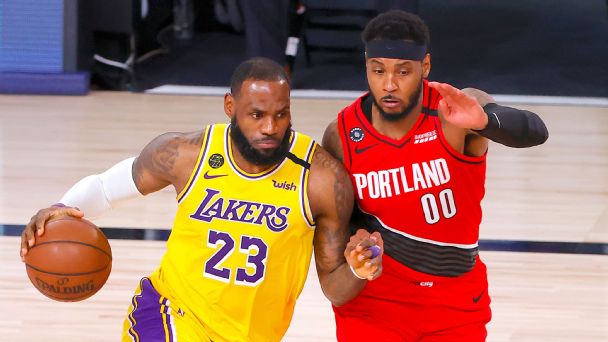
The NBA playoffs are live! Tune in here.
Saturday
• Rockets-Thunder, 6 p.m. ET on ESPN
• Lakers-Blazers, 8:30 p.m. ET on ABC
Then LeBron came back, the Cavs left the lottery, and Cohen vanished. In the lead-up to last year’s lottery, David Griffin, the Pelicans’ executive vice president of basketball operations and a Cavs executive during those halcyon lottery years, called Cohen requesting a good-luck charm. Cohen sent the tie. Griffin asked Alvin Gentry, New Orleans’ drawing room rep last year, to wear it. New Orleans leapt to No. 1.
Griffin had the tie framed, and attached a plaque commemorating its illustrious accomplishments. The frame is now in Cohen’s home, Griffin said.
• R.C. Buford, the San Antonio Spurs longtime GM and now their CEO, had no superstitions planned — no trinkets, or lucky shirts — for the team’s first trip to the lottery since landing Tim Duncan in 1997. Buford vividly remembers watching that lottery from his office in San Antonio. «I think I leaped a foot off my chair when we won,» he said.
He recalled Sam Schuler, the Spurs’ rep in the drawing room that night, relaying to Buford and Gregg Popovich that the Spurs had actually won twice — the pingpong ball machine had spit out another four-ball combination belonging to San Antonio after the winning draw. (The league discards such repeats and moves on.)
«Sam told us the rest of the room was pissed,» Buford recalled, laughing. «And then they were really pissed.»
• The combinations are organized so that the worst teams have all combos featuring 1, 2, and 3. It is legitimately exciting when the first two or three numbers are high. For 20 stomach-churning seconds, everything is in play. Case in point: The first two numbers drawn for the No. 1 pick were 5 and 13. Eight teams still had a shot. Then came a 2, and the suspense dwindled.
Likewise: The drawing for the No. 3 pick went 7, 11, 12. For 10 seconds, everyone but Sacramento, New Orleans, and Memphis was alive. The final number — 5 — earmarked the pick to the Hornets. Charlotte fans needed this.
• Jami Gertz, the famed actor and wife of Atlanta Hawks governor Tony Ressler, made her third appearance on the dais — «and hopefully my last,» she told ESPN this week. Over the previous two lotteries in Chicago, Gertz had developed one lottery day tradition: eating one slice of chocolate cake from RL Restaurant in Chicago.
That was not possible in the pandemic lottery. Gertz baked her own chocolate cake, with chocolate frosting. She has explored baking again during the pandemic, and recently baked cheesecake for the first time in 30-plus years of marriage to Ressler, she said. «I knew he loved me,» Gertz said, «but the cheesecake definitely took me up a few notches.»
• There are few lottery things funnier than seeing someone on the dais when their team does not end up with a pick. It was somehow funnier this season, when Tatum announced the Boston Celtics in the No. 14 spot — only for the camera to cut (with basically no explanation) to a stone-faced Elliot Perry, who was representing the Memphis Grizzlies. (The Grizzlies owed their pick to Boston with top-six protection.) That probably represented a best-case scenario for Memphis, but the visual still drew chuckles in the atrium.
• Here’s hoping the lottery is restored to its normal glory next year.
MORE: NBA mock draft — all 60 picks
Crédito: fuente
SECAUCUS, N.J. — The lottery has become a party for the damned. It is usually held in a fancy hotel, with pre-show mingling over cocktails and appetizers for VIPs. Once a team contingent showed up, let’s say, a little rowdier than usual after a private flight to New York. Representatives from each lottery team sit at tables adorned with team logos in the secret drawing room where the actual lottery happens about an hour before the TV show. A dozen media «observers» watch. It is a production.
The drawing room of the pandemic lottery was a curtained-off rectangle in the atrium of the NBA’s nondescript office building — it could pass as Initech’s headquarters — in Secaucus, New Jersey. There were nine people in the room — including me. There were more pingpong balls (14) than people. Other than the requisite accountant from Ernst & Young, there were no other visitors — just 40 NBA staff. The TV show, headlined by Mark Tatum, the NBA’s deputy commissioner, was filmed in the cafeteria down the hall.
I was the only media member in the drawing room. If this turns out to be one the NBA finally rigged, I will go down in infamy as having failed to detect the conspiracy.
• The NBA kicked around constructing some video wall in which representatives from each team could view (via Zoom) the drawing, but decided it was both unnecessary and cumbersome. A few team executives agitated for an in-person spot in the room, sources told ESPN. No dice.
• Each attendee stopped at a security desk at the front entrance to hand over various waivers and medical declarations. Then we proceeded into a testing room for the coronavirus nasal swab. My results came back — negative — in 23 minutes. This was apparently an antigen test — slightly less accurate than the more common PCR molecular test, prone to a few false negative results, but obviously much faster. We all wore masks for the remainder of our time in the drawing room.
• The lucky nine handed over our phones and sequestered in the drawing room at about 7:30. The drawing takes about five minutes. An NBA employee vacuums up four numbered pingpong balls, one-by-one at precise 10-second intervals, from an old-school lottery machine. (Yes, there is a timekeeper who stands with his back to the machine and holds a stopwatch.)
2 Related
There are 1,001 possible four-digit combinations. Each lottery team is assigned a certain number of them. The three worst teams get the most: 140 apiece for Golden State, Cleveland, and Minnesota.
And let me tell you: Once a grown man in a suit holds up a pingpong ball and recites aloud the number you can already see on that pingpong ball, the lottery feels like its old goofy self again — even amid a pandemic.
• After the drawing, we made small talk in the atrium as we waited for the ESPN broadcast. Suddenly, Tatum burst through double doors and into the atrium on his way to the cafeteria set. This would never happen in a regular lottery: Tatum did not know the results, and now he was chatting with a half-dozen of us who did. For about five minutes, we were at risk of spoiling it for him! As the conversation flowed, I came very close to making a generic «Woe are the Knicks» joke before realizing even that would tip him to the Knicks falling (again).
• Speaking of the Knicks: Tatum recalled Patrick Ewing, New York’s rep on the dais last season, standing right behind him — at an angle from which he could spot the contents of the No. 3 envelope before Tatum. As Tatum ripped open the envelope, he heard Ewing groan — knowing the Knicks had barely missed out on Ja Morant and Zion Williamson. Tatum can still hear that groan in his head.
• Two days before the lottery, I asked Gersson Rosas, Minnesota’s president of basketball operations, if he had any lottery superstitions. He did not. «We’re due for something good to happen to us,» Rosas said, «after everything we’ve been through.» The lottery gods (a subset of the basketball gods) agreed.
What a moment for Minnesota. As rosters stand now (subject to the usual offseason makeovers), the Wolves would probably be projected as one of the two or three worst teams in the loaded Western Conference. They owe their 2021 first-rounder, with teensy top-3 protection, to Golden State. Their team is (basically) for sale. There is no consensus No. 1 pick. If the Wolves feel pressure to chase a playoff spot, would they be open to sniffing around what they might get packaging that pick and trading down?
MORE: Who should — and will — the Timberwolves draft at No. 1?
• Also, Timberwolves: I have acquired the envelope and Wolves team placard from Thursday’s show. An NBA staffer gave them to me! Here’s proof:
(It might be one of several copies. I’m choosing to believe it’s the one Tatum held up.)
If you want it, I’m sure we can agree on some sort of transaction! I actually think you should not claim it, though. It gets depressing when teams collect too many souvenirs from lottery wins.
• Devonte’ Graham, the Hornets’ representative on the virtual dais, had not thought about his outfit, his TV backdrop, or the possibility of bringing any lucky trinket by 5 p.m. — three-ish hours before the show. «I’m trying to let it come to me,» he told ESPN. «I don’t want to plan too hard and have it backfire.» The lottery gods admired his restraint.
• Graham is still smarting about being left off the list of finalists for the NBA’s Most Improved Player award. «I was definitely upset,» he said. «And surprised.»
• We know the Warriors, with reasonable aspirations of contending for the title next season, will sniff around what they might get packaging the No. 2 pick for a quality veteran or two (plus other stuff).
The NBA has not seen a dilemma like this in a long time. Maybe you don’t think it’s a dilemma — that the Warriors need to do everything in their power to keep their title window open. That’s probably so. A title window is precious. If Draymond Green’s decline this season was real — and not the product of malaise — Golden State cannot act as if the Stephen Curry/Klay Thompson/Green trio alone puts them ahead of the Los Angeles teams (or perhaps even on par with them). Thompson has not appeared in a game in 14 months.
But if Green revs back up, that trio — plus a few intriguing young players, including the No. 2 pick — is pretty damned good. As a rule, rookies do not help you win, but No. 2 picks can be exceptions.
Nailing that pick could give Golden State a bridge beyond the Curry/Thompson/Green era. They have talked about wanting to be the Spurs — about being a top team for a quarter century. Drafting a star at No. 2 would unlock that path. As Kevin Pelton noted Thursday, they might also have a hard time finding a veteran who is both available for what Golden State can offer and worth what they can offer — and really moves the needle on their title odds for next season.
Of course, the Warriors could trade this pick and still draft a bridge star with Minnesota’s 2021 pick — or with a stroke-of-genius trade down the line, as the Spurs did in swapping George Hill for Kawhi Leonard.
Get ready for LaMelo Ball, Anthony Edwards and the next crop of NBA talent.
• Latest mock draft
• Top 100 draft rankings
• Full draft order
• Scouting likely lottery picks
But what if Minnesota’s pick somehow ends up toward the bottom of next year’s lottery — or worse? The draft is unpredictable. That doesn’t mean it’s completely random. Your chances of finding a franchise star are still higher at the top. That might be less true this season, but it’s still generally true.
If the Warriors think they can get the guy they want elsewhere in the lottery, they could thread the needle in some sort of Jayson Tatum/Markelle Fultz-style deal in which they trade down and pick up some fringe veteran help. But some other team has to love someone else enough to pay to move up.
• Golden State brass initially asked Joe Lacob, the team’s governor, if he wanted to helm the virtual dais for the team’s first lottery appearance since their legendary 2012 tank job for Harrison Barnes.
They consider Lacob unusually lucky, for various reasons. He told them, semi-facetiously, something to the effect of: «I don’t do lotteries. I do championships.» When ESPN’s Ramona Shelburne asked Lacob about that cheeky line, he chuckled. «This is gonna be like the ‘light years’ thing,» Lacob said. «I did say that. But when you’re in last place, you shouldn’t really have much to say.»
Stephen Curry was the next and obvious choice. He had one request, Golden State higher-ups said: Ask Klay first. Thompson apparently passed.
• Yes, the name of Golden State’s lucky dog — Joe Lacob’s dog — that Curry referenced on the broadcast with Rachel Nichols is Larry O’Brien Lacob. Larry was one of more than 100 pets the Miami Heat and Warriors helped relocate to the Bay Area when Hurricane Irma hit South Florida in 2017.
• There is skepticism among team executives that this draft will take place as scheduled on Oct. 16 — in part because there is even more skepticism across every sector of the league that free agency will begin as scheduled two days later. (See more in this report from ESPN’s Adrian Wojnarowski.) Obviously, everything about this situation is fluid.
There is doubt the league and National Basketball Players Association can agree to a firm salary cap for the 2020-21 season by either date. Free agency cannot commence without that number. The cap is determined by the league’s overall revenue projection — which is based on revenue from the prior season. The league and union need to compile that for the current season. That is complicated.
Projecting forward, next season will bring a massive revenue downturn. No party wants the cap to fall in sync with that. It is bad for players and teams. It has been widely reported, including at ESPN, that the most convenient solution would be carrying over this season’s cap figure — $109 million — into 2020-21, and placing a much larger percentage of each player’s salary into escrow so that players do not end up with more than their guaranteed share of actual revenue.
That sounds simple, but it’s not. It requires thorny negotiation between the league and union, and among the players. (A one-year salary reduction, via escrow, could penalize some players more than others.) It could end up requiring a wholesale rewriting of major parts of the CBA, though nobody wants that, either.
Point is, there are lots of people around the NBA ecosystem who don’t expect free agency to start until sometime in November, or perhaps even early December. (Again: Everything is fluid; no one knows anything.)
Answer questions on the NBA playoffs and compete for $30,000 of guaranteed prizes! Make Your Picks
The final cap number usually comes in just before free agency — and after the draft — but the league provides teams a solid estimate ahead of the draft. This year, there are only 48 hours between those events. Can you have a draft without an accurate cap estimate?
The draft is one of the league’s three busiest trade periods. How can you trade veteran players — on contracts of different amounts and lengths — without knowing what the cap is? Do you really want to draft without knowing rookie scale salaries with at least 90% certainty?
A few executives have spitballed about tweaking this one draft so that teams could trade only picks — and not current players. The appeal would be getting rookies in the door, such as they are allowed in any door, as early as possible. But the draft and free agency are connected; teams navigate the draft with an eye on what comes next.
The league may prefer to keep the current draft date to capitalize on momentum coming out of the bubble. They could complete some frantic negotiation that would at least lead to a preliminary cap estimate. They could also just say, «Tough.» Teams have drafted under great uncertainty before — including with lockouts looming.
• Let’s be polite and say the Delete 8 (hat tip: John Hollinger) are relieved none of the bubble teams moved up. Non-bubble executives were already upset about missing out on the microwaved chemistry process the Phoenix Suns appear to have enjoyed in Orlando, though one wonders how upset they would be if Phoenix went a quiet 4-4. One GM described a bubble team jumping the non-bubblers as «our worst nightmare» in the lead-up to the lottery.
• If you want to know why the Cavs dropped three spots Thursday and the Pelicans failed to move up, you’ll find the answer in the home of Jeff Cohen — former vice chair of the Cleveland Cavaliers and confidante of Cavs’ governor Dan Gilbert. Cohen represented the Cavaliers in the drawing room in each of their three lottery wins from 2011 through 2014 — the greatest stretch of lottery luck in NBA history. He wore the same black tie with silver-gray striping to each lottery. I began referring to him as a warlock.
The NBA playoffs are live! Tune in here.
Saturday
• Rockets-Thunder, 6 p.m. ET on ESPN
• Lakers-Blazers, 8:30 p.m. ET on ABC
Then LeBron came back, the Cavs left the lottery, and Cohen vanished. In the lead-up to last year’s lottery, David Griffin, the Pelicans’ executive vice president of basketball operations and a Cavs executive during those halcyon lottery years, called Cohen requesting a good-luck charm. Cohen sent the tie. Griffin asked Alvin Gentry, New Orleans’ drawing room rep last year, to wear it. New Orleans leapt to No. 1.
Griffin had the tie framed, and attached a plaque commemorating its illustrious accomplishments. The frame is now in Cohen’s home, Griffin said.
• R.C. Buford, the San Antonio Spurs longtime GM and now their CEO, had no superstitions planned — no trinkets, or lucky shirts — for the team’s first trip to the lottery since landing Tim Duncan in 1997. Buford vividly remembers watching that lottery from his office in San Antonio. «I think I leaped a foot off my chair when we won,» he said.
He recalled Sam Schuler, the Spurs’ rep in the drawing room that night, relaying to Buford and Gregg Popovich that the Spurs had actually won twice — the pingpong ball machine had spit out another four-ball combination belonging to San Antonio after the winning draw. (The league discards such repeats and moves on.)
«Sam told us the rest of the room was pissed,» Buford recalled, laughing. «And then they were really pissed.»
• The combinations are organized so that the worst teams have all combos featuring 1, 2, and 3. It is legitimately exciting when the first two or three numbers are high. For 20 stomach-churning seconds, everything is in play. Case in point: The first two numbers drawn for the No. 1 pick were 5 and 13. Eight teams still had a shot. Then came a 2, and the suspense dwindled.
Likewise: The drawing for the No. 3 pick went 7, 11, 12. For 10 seconds, everyone but Sacramento, New Orleans, and Memphis was alive. The final number — 5 — earmarked the pick to the Hornets. Charlotte fans needed this.
• Jami Gertz, the famed actor and wife of Atlanta Hawks governor Tony Ressler, made her third appearance on the dais — «and hopefully my last,» she told ESPN this week. Over the previous two lotteries in Chicago, Gertz had developed one lottery day tradition: eating one slice of chocolate cake from RL Restaurant in Chicago.
That was not possible in the pandemic lottery. Gertz baked her own chocolate cake, with chocolate frosting. She has explored baking again during the pandemic, and recently baked cheesecake for the first time in 30-plus years of marriage to Ressler, she said. «I knew he loved me,» Gertz said, «but the cheesecake definitely took me up a few notches.»
• There are few lottery things funnier than seeing someone on the dais when their team does not end up with a pick. It was somehow funnier this season, when Tatum announced the Boston Celtics in the No. 14 spot — only for the camera to cut (with basically no explanation) to a stone-faced Elliot Perry, who was representing the Memphis Grizzlies. (The Grizzlies owed their pick to Boston with top-six protection.) That probably represented a best-case scenario for Memphis, but the visual still drew chuckles in the atrium.
• Here’s hoping the lottery is restored to its normal glory next year.
MORE: NBA mock draft — all 60 picks



